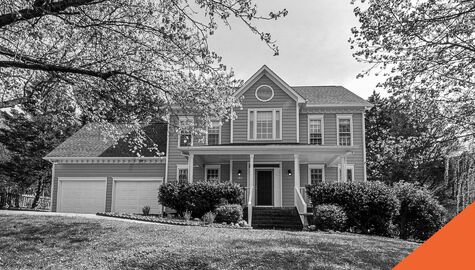How Much is Classic Car Insurance in Ontario?
Wednesday, 21 February 2024
Owning a classic car is more than just a hobby; it's a passion. With their unique styling, old-school technology, and visual appeal, these timeless vehicles hold a special place and cultural significance in the hearts of car enthusiasts. That’s why protecting these prized possessions goes beyond the typical auto insurance policy.
Classic car insurance offers coverage designed to safeguard these automotive treasures, providing peace of mind to collectors and automotive aficionados. In this blog, we answer the question, “How much is classic car insurance in Ontario?” and explore why it's essential, what it covers, and how to adequately protect your beloved rides for the road ahead. Keep reading to learn more!
What is Classic Car Insurance?
Classic car insurance is a specialized insurance coverage that protects vintage and collectible vehicles. Unlike standard car insurance policies, which primarily focus on vehicles used for everyday needs, classic car insurance is tailored to cover the unique features of antique, classic, and exotic automobiles.
One of the key differences between classic car insurance and standard auto insurance is the valuation method. While standard policies typically use the vehicle's actual cash value (ACV), classic car insurance often utilizes an agreed value or stated value, which considers the vehicle's rarity, condition, and market demand. This ensures that owners receive a predetermined payout that accurately reflects the car's value in the event of a total loss, helping them avoid potential depreciation issues.
Additionally, classic car insurance may offer features such as flexible usage restrictions, specialized repair options, and coverage for spare parts or restoration efforts, catering to various concerns of classic car owners.
Does My Vehicle Qualify for Classic Car Insurance?
Owning a classic car is a passion shared by drivers across Ontario, and ensuring these automotive treasures are adequately protected requires policies designed specifically for them. However, not all classic cars qualify for this specialized insurance. In this section, we will delve into the qualifications determining if your vehicle meets classic car insurance coverage criteria.
Age
Typically, the vehicle must be at least 20 years old to qualify for classic car insurance. However, some insurers may have different age requirements, and newer vehicles may be eligible for this coverage. For example, some cars at least 15 years old may qualify if they are considered a collector’s item. If you’re unsure whether your car qualifies, don’t hesitate to contact a BIG broker.
Limited Usage
Classic car insurance often requires that the vehicle is not used as a primary or daily driver. Instead, the expectation is that these vehicles will only be used on a limited basis, such as for car shows, exhibitions, club events, or occasional pleasure drives. Some classic car insurance policies may impose mileage restrictions or geographic limitations on where the vehicle can be driven. For example, insurance providers may limit your classic car to 5,000 kilometres of driving per year.
These restrictions help mitigate the risk of accidents and maintain the car's value over time by limiting wear and tear. Be sure to review any usage restrictions outlined in your policy to ensure compliance.
Storage & Condition
Classic cars are usually required to be stored in a secure, enclosed space when not in use. This could include a garage, carport, or storage facility. Keeping the vehicle protected from the elements helps maintain its condition and reduces the risk of damage or theft, which is crucial for preserving its value over time.
While not always a strict requirement, insurers may evaluate the vehicle's condition before providing coverage. Generally, classic cars should be well-maintained, restored to original specifications, and in good working order. Ensuring your classic car is in top condition not only enhances its value but also reduces the risk of insurance claims.
Ownership
Since classic car insurance is intended for vehicles not used for everyday commuting, the owner must typically have another car designated as their primary vehicle for daily transportation. This requirement ensures that classic car insurance is reserved for vehicles that are truly cherished and used for recreational purposes.
It's essential to review the specific eligibility criteria outlined by your provider, as requirements can vary between classic car insurance companies. Additionally, working with a broker specializing in classic car coverage can ensure that your vehicle meets all the necessary qualifications for protection.
How Much is Classic Car Insurance in Ontario?
Premiums for insurance in classic cars in Ontario can vary significantly depending on several factors, including the type of vehicle, its intended use, the owner's location, and their driving record. On average, classic car insurance premiums in Ontario typically range from $300 to $1,000 per year. However, this is just a general estimate, and individual quotes may be higher or lower based on specific circumstances. More details on the factors that influence cost have been included below.
Type of Vehicle
The type of vehicle is a critical determinant of classic car insurance premiums. Factors such as the make, model, age, rarity, and overall value of the vehicle all play a significant role in assessing insurance costs. Generally, older and more valuable classic cars will command higher insurance premiums due to their higher replacement costs and potential restoration expenses. Similarly, rare or limited-production models may incur higher premiums due to their unique nature and potential difficulty in sourcing replacement parts.
Vehicle Use
As previously mentioned, classic cars cannot be your main mode of transportation. This means there are typically limited instances where you can use them. For example, you may take a classic car out on special occasions, such as an afternoon cruise through the countryside with your family. This limited usage reduces the risk that something unexpected could happen to your vehicle, which in turn lowers insurance costs. However, it's essential to accurately disclose the intended usage of the vehicle to avoid potential coverage issues in the event of a claim.
Location
The geographic location where the vehicle is primarily kept and driven can significantly influence insurance premiums. Areas with higher population densities and increased traffic congestion tend to have higher insurance rates compared to smaller towns and cities. Additionally, certain regions may have higher vehicle theft rates or vandalism, impacting insurance costs. Insurance companies consider these factors when determining premiums to reflect the varying levels of risk associated with different locations.
Driving Record
The owner's driving record is crucial in determining classic car insurance premiums. Some insurance companies require you to have at least 10 years of experience driving and a clean record with no more than two minor driving convictions, as this demonstrates responsible driving behaviour.
Vehicle Storage and Security Measures
Storage and security methods, when the vehicle is not in use, can also influence insurance costs. Vehicles kept in a secure garage or storage facility are less susceptible to theft or damage, which can lead to lower insurance premiums. Installing anti-theft devices, alarms, or tracking systems further reduces the risk of theft and potential losses, which may result in additional premium discounts from insurers. Proper storage and security measures protect the vehicle and contribute to lower insurance costs over time.
Policy Coverage and Deductibles
The specific coverage options selected and the chosen deductible amount will impact insurance premiums. Opting for comprehensive coverage, which protects against theft, vandalism, and non-collision damage, will result in higher premiums compared to basic liability coverage. Similarly, choosing a lower deductible will lead to higher premiums, while a higher deductible can lower insurance costs.
Whether you're cruising down the open road or showcasing your classic ride at a car show, having the right insurance coverage ensures you can preserve your piece of history for years to come. By considering these factors and requesting a quote from Billyard Insurance Group, classic car owners in Ontario can find the right coverage at a competitive price to protect their cherished vehicles.
Insurance Made Easy with BIG
We hope this blog has provided more clarity on the question, “How much is classic car insurance in Ontario?” While the cost of insurance may vary, the peace of mind and assurance that comes with knowing your cherished vehicle is covered are priceless. In the world of classic car insurance, protecting your vehicle isn't just about maintaining its aesthetics and heritage; it's about safeguarding the memories and passion it represents.
By understanding the factors influencing insurance costs, you can make an informed decision when ensuring your classic car is adequately protected. If you are the proud owner of one of these highly sought-after vehicles and need advice on securing the best vintage car insurance in Ontario, contact your nearest BIG branch, and one of our experienced brokers will help you every step of the way.



